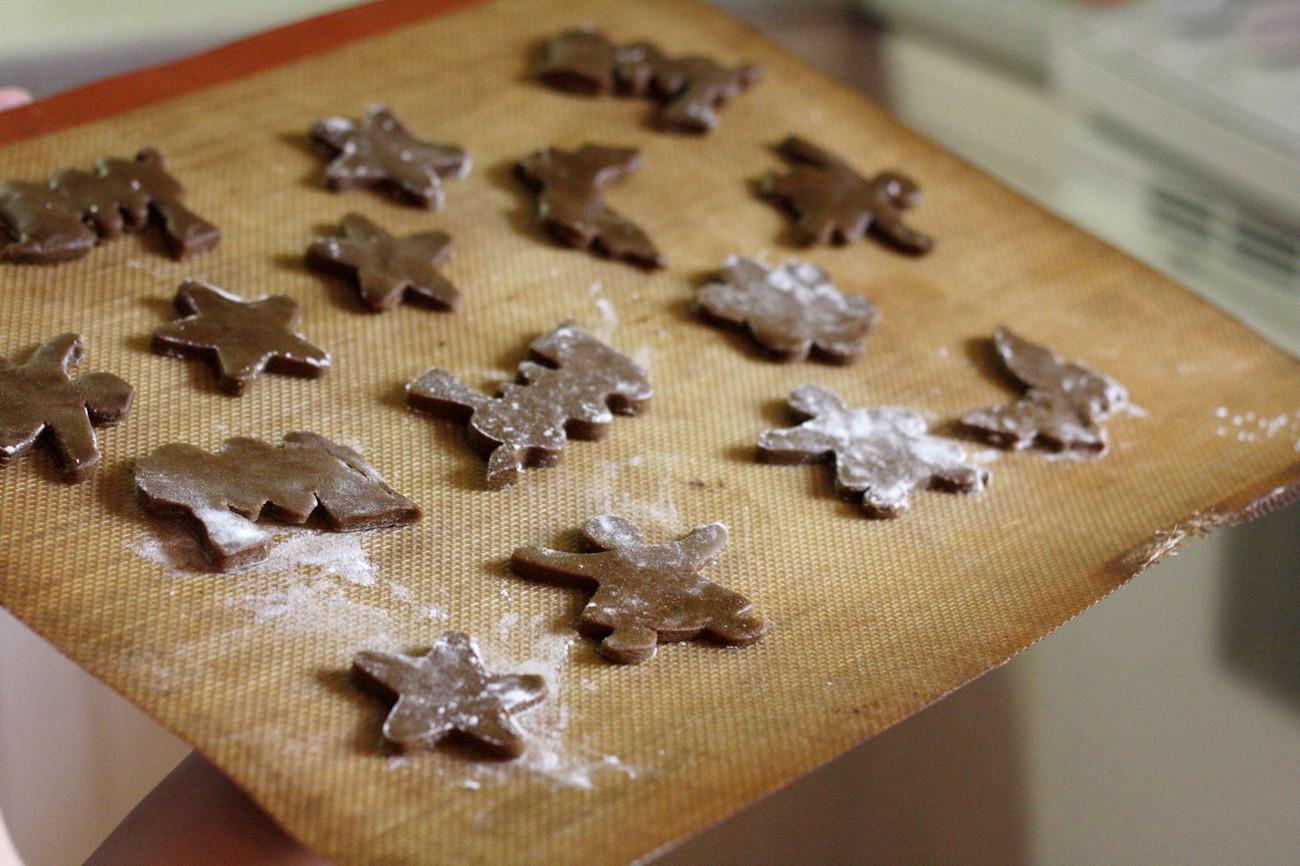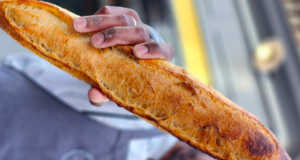Spicy and sweet, this treat can be the scaffolding of a house, the center cookie on a plate for Santa, or a sliced bread between holiday meals, but one thing is certain, gingerbread is the multifaceted dessert of the holiday season. It takes on various forms and textures, and this cookie always has a deep spiced crumb with a dark golden coloring. Gingerbread has been the center stage of Christmastime for a long, long time.

References to honey bread spiced with ginger date back to ancient Egypt and Greece, where these coveted, expensive ingredients would be used in ceremonies or even buried in tombs.
The gingerbread that migrated north to Europe was still an opulent and decadent treat for the wealthy. These spice cakes cropped up throughout Europe and they were all slightly different. There was pfefferkuchen and lubkuchen in Germany, pierniki torunski in Poland, pain d’epice in France, peperkoek in the Netherlands and Belgium, pryaniki in Russia, turta dolce in Romania, and biber in Switzerland. These are just some of the examples and varieties of gingerbread in the northern European region, and the latter list certainly doesn’t cover all of them out there.

What was the most different about gingerbread of the past was that gingerbread was made with actual bread ground up and mixed with a variety of spices or ingredients. There was also a sticky sweet form of gingerbread wet with several splashes of alcohol. These soft, candy-like gingerbread treats would be pressed into molds, creating elaborate shapes on top. It was only in the 16th, that the bread crumbs were replaced by flour. This change in base came with a change in texture and with that, price. By the 16th century onward, gingerbread’s exclusivity decreased, and it was an accessible treat for the average wealthy class (still not accessible to everyone yet).
Gingerbread spread and maintained exclusivity not just because the spices were expensive, but the production was also restricted. Gilded bakers or religious monasteries restricted gingerbread making to Christmas and Easter only. Gingerbread was also considered a political vessel, being used by political or royal officials as treats to be distributed to swing the opinion of the masses. High courts, like that of Elizabeth I, created cookies that had a likeness to her guests. The gingerbread men and women would be shaped in decorating to correspond to the images of those attending the event.

Some of these recipes called for a whole cabinet’s worth of aromatic spices, but humbler recipes called for black pepper, ginger, and nutmeg. Others called for varying ratios, creating recipes called white or red gingerbread. Recipes also used treacle, honey, or molasses as a sweetener and way to flavor the cookies. Essentially there was no one way to make gingerbread.

The gingerbread world saw a change in the 16th century when the Brothers Grimm published the story, Hansel and Gretel. The witch’s gingerbread house became a dessert trend, made alongside standard Christmastime gingerbread shapes. Some people say that the authors were inspired by gingerbread houses, but either way, their story created a surge in the popularity of the house cookie. The gingerbread cookie and the gingerbread house began to weave their way further into the holiday season.

During the 18th and 19th centuries, there was a different variety of gingerbread called gilted gingerbread, which was rather dense and topped with gold leaf. The phrase takes the gilt off of the gingerbread derived from this dessert. Gingerbread was then a mixture of both literal loaf breads, as well as rolled-out cookies. The flavor and intensity varied from recipe to recipe, but the star spice, ginger, was supposedly front and center. Most of the time, however, the ginger flavor was masked by stronger spices or intense sugary ingredients like granulated sugar or molasses.
Nowadays in the US, the sugar cookie seems to reign supreme for holiday baking, but the gingerbread cookie is always there to define the holiday season.













